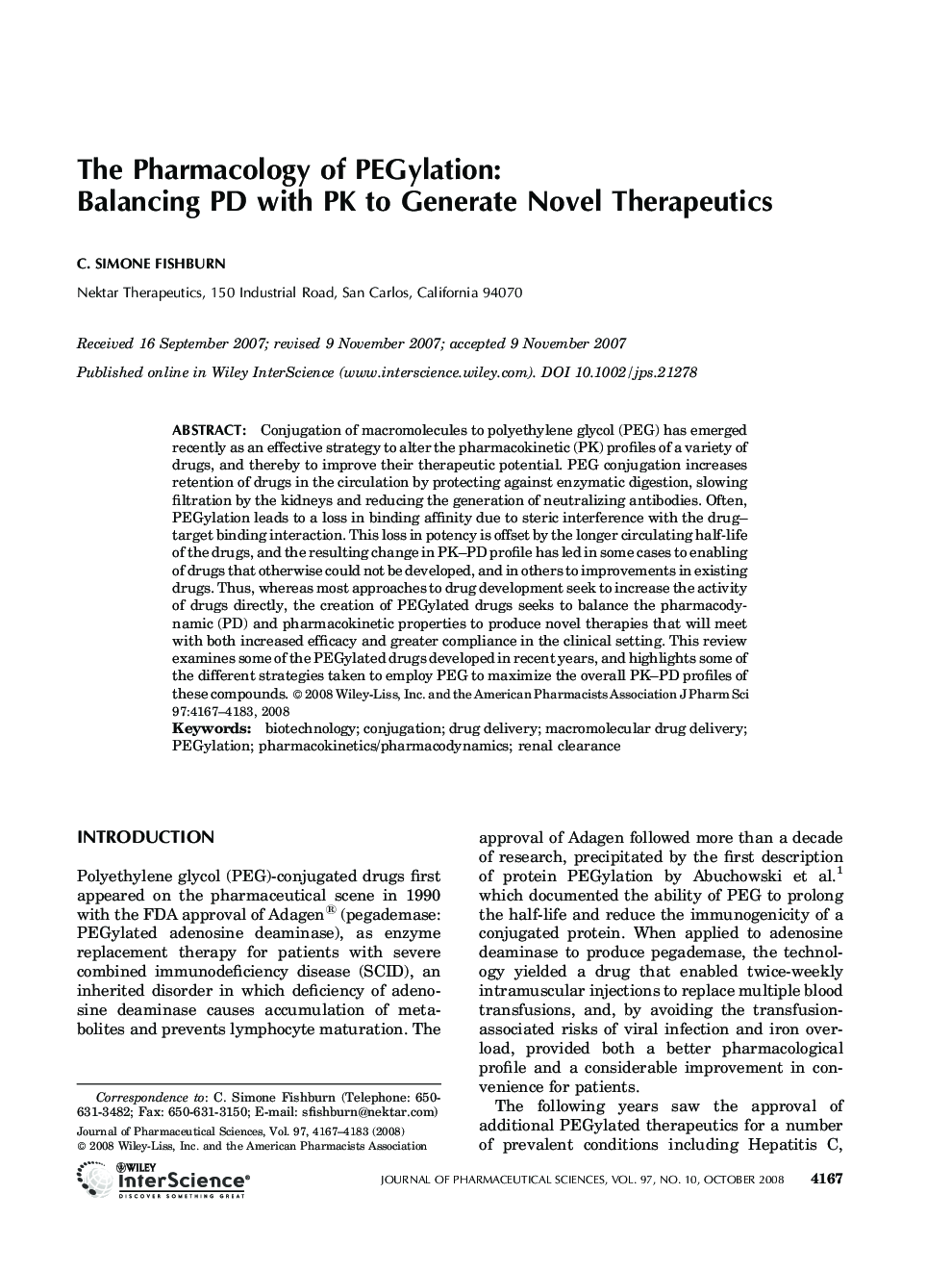| Article ID | Journal | Published Year | Pages | File Type |
|---|---|---|---|---|
| 2485319 | Journal of Pharmaceutical Sciences | 2008 | 17 Pages |
Abstract
Conjugation of macromolecules to polyethylene glycol (PEG) has emerged recently as an effective strategy to alter the pharmacokinetic (PK) profiles of a variety of drugs, and thereby to improve their therapeutic potential. PEG conjugation increases retention of drugs in the circulation by protecting against enzymatic digestion, slowing filtration by the kidneys and reducing the generation of neutralizing antibodies. Often, PEGylation leads to a loss in binding affinity due to steric interference with the drug-target binding interaction. This loss in potency is offset by the longer circulating half-life of the drugs, and the resulting change in PK-PD profile has led in some cases to enabling of drugs that otherwise could not be developed, and in others to improvements in existing drugs. Thus, whereas most approaches to drug development seek to increase the activity of drugs directly, the creation of PEGylated drugs seeks to balance the pharmacodynamic (PD) and pharmacokinetic properties to produce novel therapies that will meet with both increased efficacy and greater compliance in the clinical setting. This review examines some of the PEGylated drugs developed in recent years, and highlights some of the different strategies taken to employ PEG to maximize the overall PK-PD profiles of these compounds.
Keywords
Related Topics
Health Sciences
Pharmacology, Toxicology and Pharmaceutical Science
Drug Discovery
Authors
C.Simone Fishburn,
